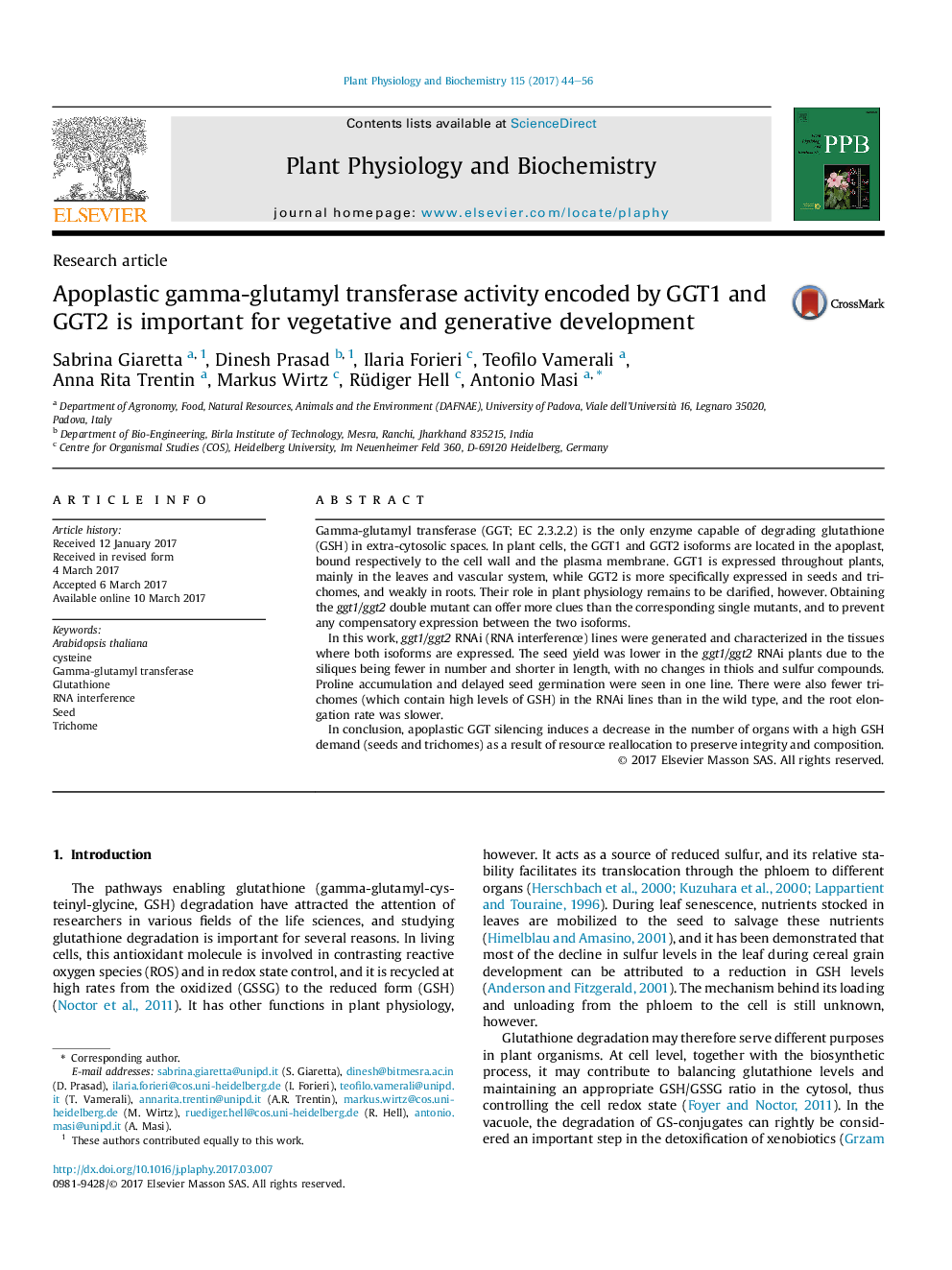| کد مقاله | کد نشریه | سال انتشار | مقاله انگلیسی | نسخه تمام متن |
|---|---|---|---|---|
| 5515372 | 1541906 | 2017 | 13 صفحه PDF | دانلود رایگان |

- The present study is the first to have generated ggt1/ggt2 RNAi lines.
- Apoplastic GGT silencing affects seed yield without influencing sulfur compounds.
- The ggt1/ggt2 RNAi lines contained fewer trichomes.
- Apoplastic GGTs may integrate sulfur levels when demand is high by degrading GSH.
Gamma-glutamyl transferase (GGT; EC 2.3.2.2) is the only enzyme capable of degrading glutathione (GSH) in extra-cytosolic spaces. In plant cells, the GGT1 and GGT2 isoforms are located in the apoplast, bound respectively to the cell wall and the plasma membrane. GGT1 is expressed throughout plants, mainly in the leaves and vascular system, while GGT2 is more specifically expressed in seeds and trichomes, and weakly in roots. Their role in plant physiology remains to be clarified, however. Obtaining the ggt1/ggt2 double mutant can offer more clues than the corresponding single mutants, and to prevent any compensatory expression between the two isoforms.In this work, ggt1/ggt2 RNAi (RNA interference) lines were generated and characterized in the tissues where both isoforms are expressed. The seed yield was lower in the ggt1/ggt2 RNAi plants due to the siliques being fewer in number and shorter in length, with no changes in thiols and sulfur compounds. Proline accumulation and delayed seed germination were seen in one line. There were also fewer trichomes (which contain high levels of GSH) in the RNAi lines than in the wild type, and the root elongation rate was slower.In conclusion, apoplastic GGT silencing induces a decrease in the number of organs with a high GSH demand (seeds and trichomes) as a result of resource reallocation to preserve integrity and composition.
209
Journal: Plant Physiology and Biochemistry - Volume 115, June 2017, Pages 44-56